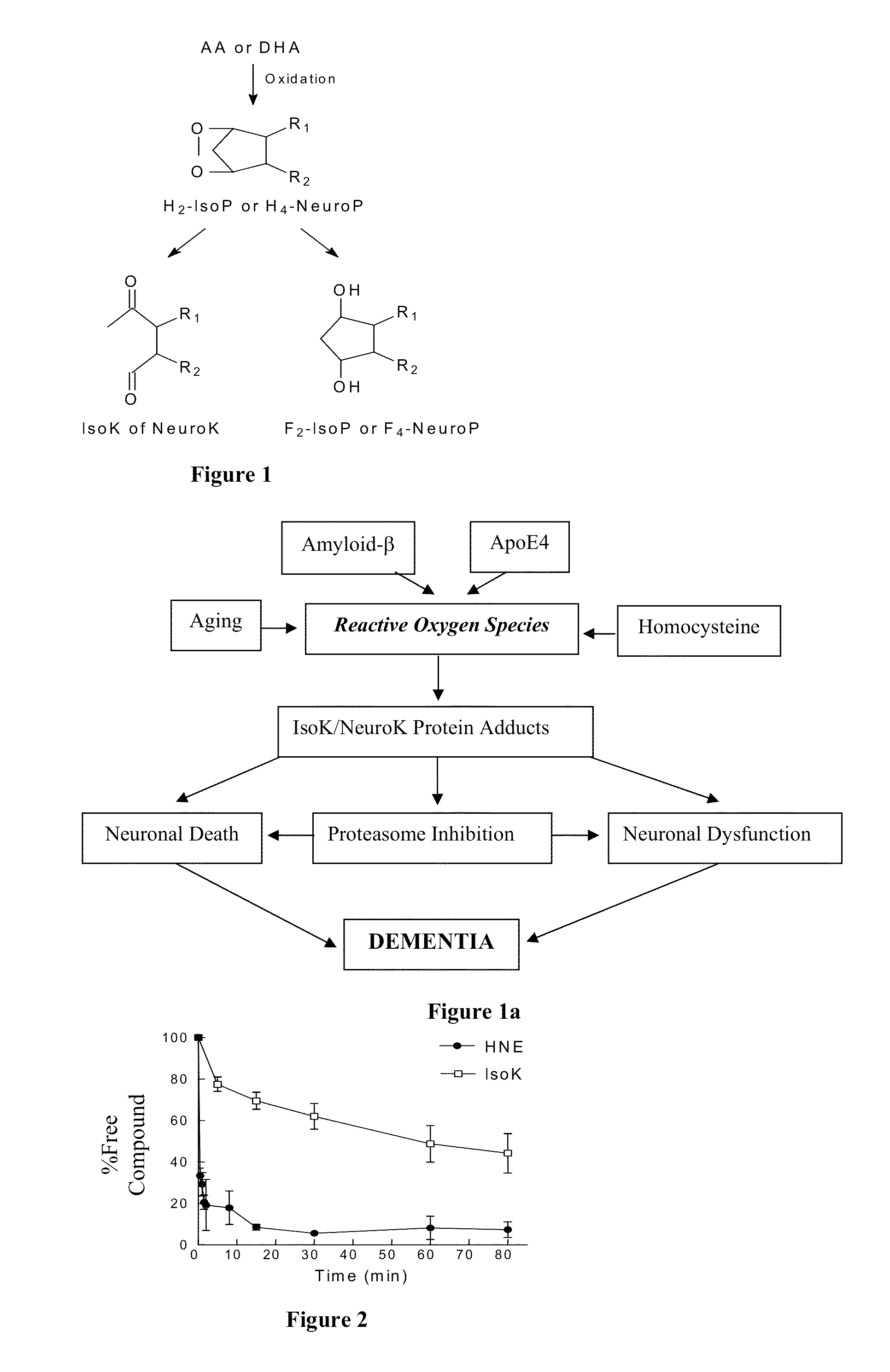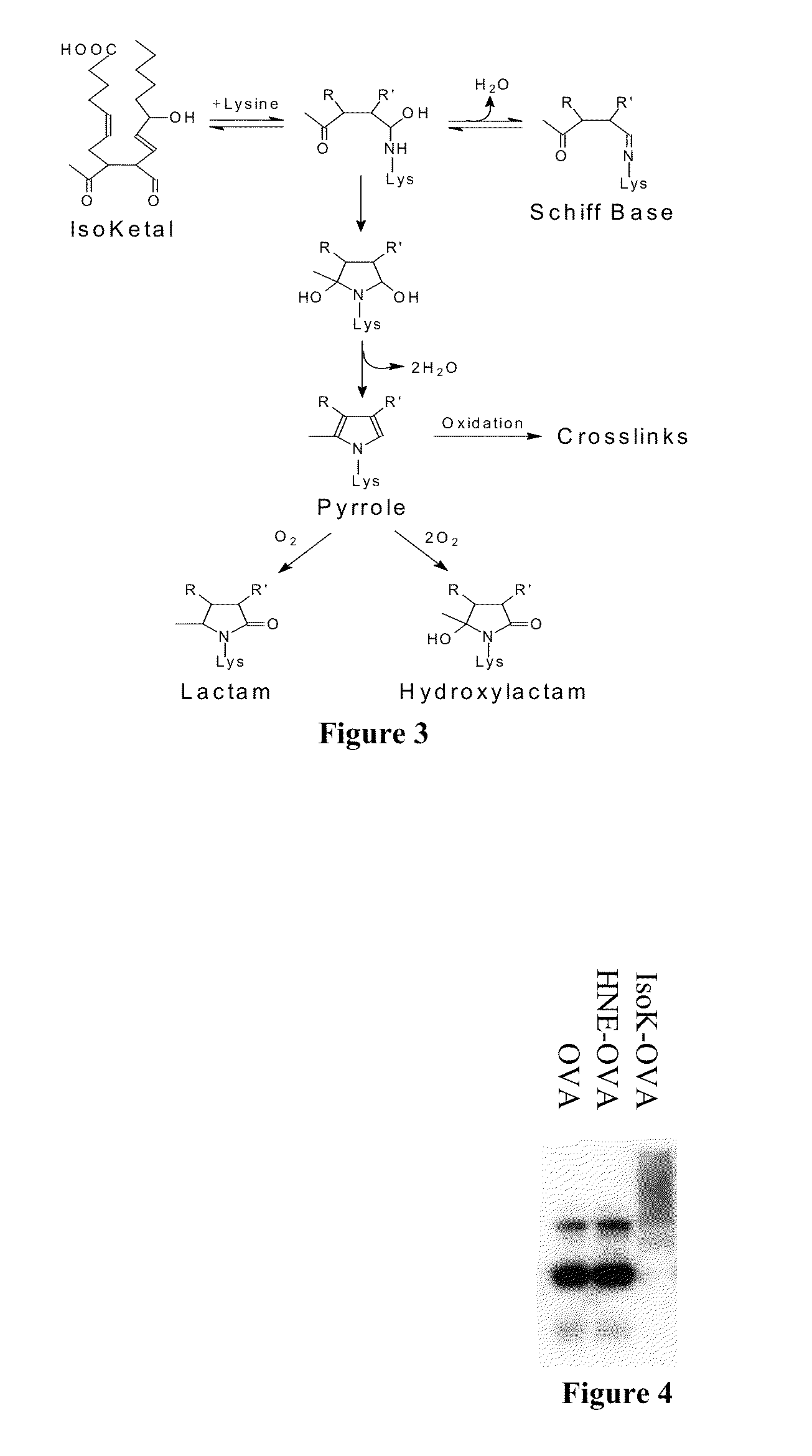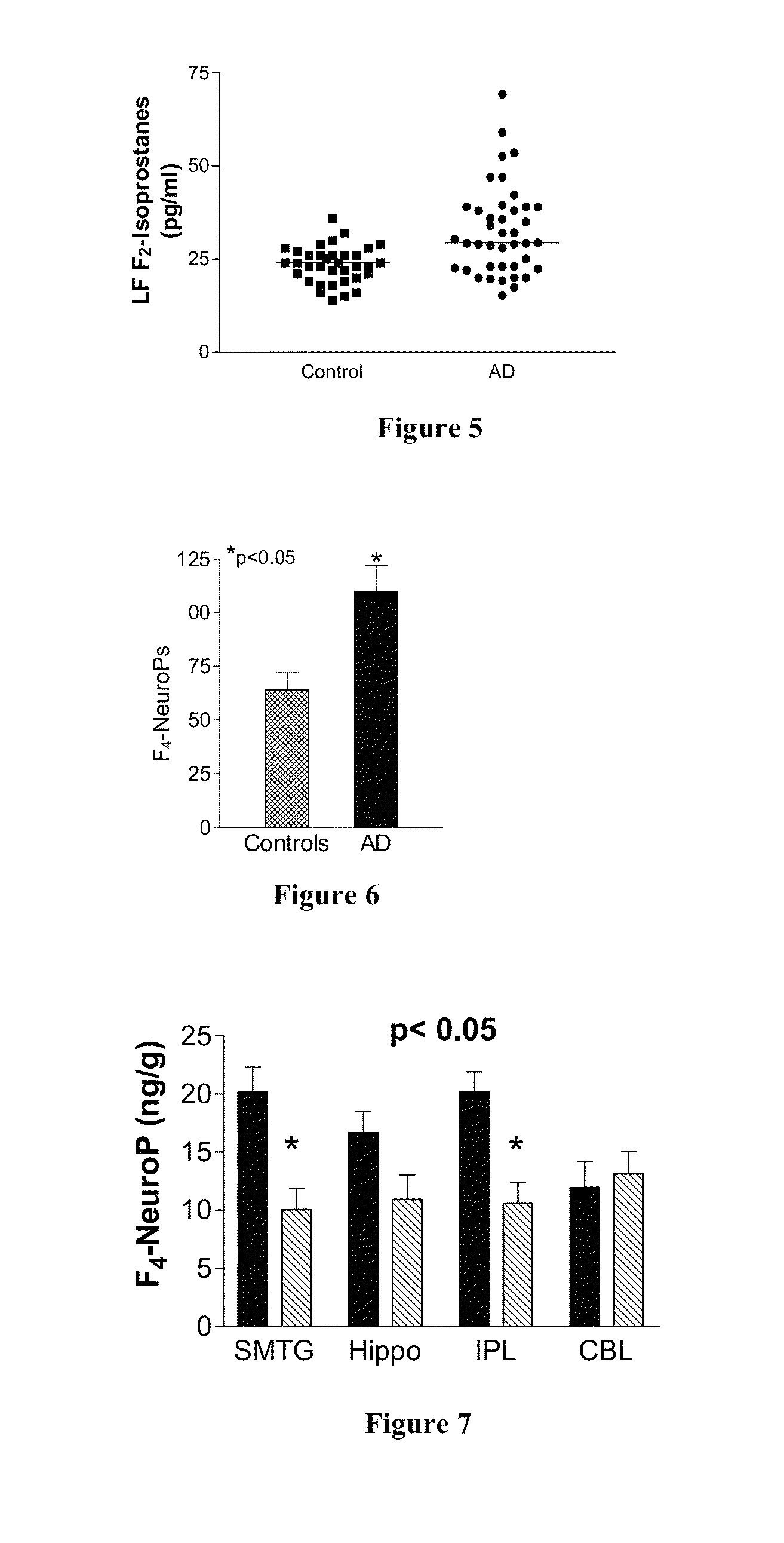Isoketal scavengers and mitigation of disorders involving oxidative injury
a technology of isoketal and oxidative injury, applied in the direction of biocide, drug composition, peptide/protein ingredient, etc., can solve the problems of only about 0.5% of all mutations, major and costly public health problems, and neurodegenerative diseases, and achieve the reduction of choline acetyltransferase activity, reduce choline acetyltransferase activity, and reduce acetyltransferase activity
- Summary
- Abstract
- Description
- Claims
- Application Information
AI Technical Summary
Benefits of technology
Problems solved by technology
Method used
Image
Examples
example 1
IsoKs, IsoK Scavengers and the Heart
[0223]IsoK adducts are increased in infarcted area of dog hearts (FIG. 42A) and in hearts from patients with coronary artery disease (ischemic cardiomyopathy ICM) (FIG. 42B)
[0224]Mimicking what happens during myocardial infarction, exposure of cells expressing the cardiac Na channel to an oxidant converts the Na channel electrophysiology into a pro-arrhythmic state.
[0225]Importantly, this is inhibited and / or prevented by compounds of the present invention.
[0226]Additionally, in infarcted mice the area of infarcted myocardium is decreased by ˜½, heart contractile function is significantly improved and the survival rate is increased by ˜2-fold by treatment with compounds of the present invention.
[0227]In a series of experiments, the present inventors have tested the effect of the γ KA scavenger salicylamine (SA) in mice subjected to ligation of the left anterior coronary artery resulting in a myocardial infarction. All experiments were done in blind...
example 2
IsoKs in Alzheimer's Disease (AD)
[0230]This Example further demonstrates the role of IsoKs in Alzheimer's Disease (AD). IsoK adducts are significantly increased in disease affected areas of brain from patients with AD, which is not present in brains from normal age-matched controls.
[0231]The location of IsoK adducts in the AD brains by immunohistochemistry reveals intense staining (brown—See FIG. 44) in essentially all neurons and neuropil in disease affected areas.
[0232]The present inventors have determined that IsoK adducts increase in the brain of mice during aging. Additionally, in a transgenic mouse model of AD (hApoE4) animals develop memory and learning deficits as they age. The inventors have determined that the development of memory and learning deficits does not occur in transgenic animals treated with the compounds of the present invention. See FIG. 45.
example 3
[0233]This Example demonstrates the potency and selectivity of examples of scavengers of the present invention.
[0234]To understand the basis of PM's reactivity with γ KAs, the present inventors determined the second order reaction rates for a series of primary amines related to PM with the model γ KA, 4-oxopentanal (FIG. 46A). All rates are shown relative to N-α-acetyl-lysine. The present inventors discovered that a key is a phenolic amine with a hydroxyl group adjacent to the methyl amine. This study resulted in three γ KA scavengers of the present invention: pyridoxamine (PM), salicylamine (SA), and pentylpyridoxamine (PPM). Additionally, another compound of the present invention, 4-salicylamine (4-SA), the inactive regioisomer of SA, can be used as a negative control. While PM, SA, and PPM were clearly very good at scavenging γ KAs, PM is known to also scavenge methylglyoxal and other γ-ketoaldehydes derived from lipid peroxidation. While any primary amine including PM should be ...
PUM
| Property | Measurement | Unit |
|---|---|---|
| time | aaaaa | aaaaa |
| frequency | aaaaa | aaaaa |
| pH | aaaaa | aaaaa |
Abstract
Description
Claims
Application Information
 Login to View More
Login to View More - R&D
- Intellectual Property
- Life Sciences
- Materials
- Tech Scout
- Unparalleled Data Quality
- Higher Quality Content
- 60% Fewer Hallucinations
Browse by: Latest US Patents, China's latest patents, Technical Efficacy Thesaurus, Application Domain, Technology Topic, Popular Technical Reports.
© 2025 PatSnap. All rights reserved.Legal|Privacy policy|Modern Slavery Act Transparency Statement|Sitemap|About US| Contact US: help@patsnap.com



